World Network of Biosphere Reserves in the Arab States
Under UNESCO's Man and the Biosphere Programme, there are 31 biosphere reserves recognised as part of the World Network of Biosphere Reserves in the African States and Arab States. These are distributed across 11 countries in the region as of March 2018.[1]

Man and the Biosphere Programme logo
Biosphere reserves
 – Also a World Heritage site
– Also a World Heritage site
| Country | Image | Biosphere reserve | Designation year | Area | Description | Ref. |
|---|---|---|---|---|---|---|
| Algeria | 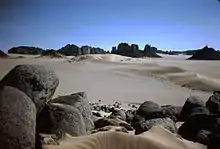 |
Tassili n'Ajjer |
1986 | 7,200,000 ha (27,799 sq mi) |
[2] | |
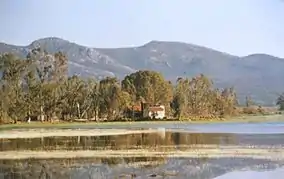 |
El Kala | 1990 | 76,348 ha (295 sq mi) |
[3] | ||
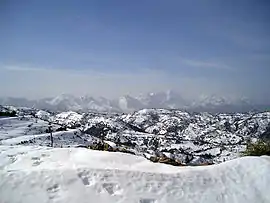 |
Djurdjura | 1997 | 35,660 ha (138 sq mi) |
[4] | ||
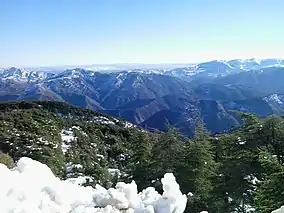 |
Chréa National Park | 2002 | 36,985 ha (143 sq mi) |
[5] | ||
– |
Taza National Park | 2004 | 1,643 ha (6 sq mi) |
[6] | ||
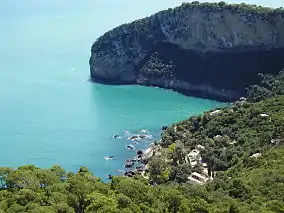 |
Gouraya National Park | 2004 | 2,080 ha (8 sq mi) |
[7] | ||
| Belezma Range | 2015 | 26,250 ha (101 sq mi) |
[8] | |||
– |
Tlemcen Mountains | 2016 | 98,532 ha (380 sq mi) |
[9] | ||
| Egypt |  |
Omayed | 1981 | 75,800 ha (293 sq mi) |
[10] | |
– |
Wadi Allaqi | 1993 | 2,380,000 ha (9,189 sq mi) |
[11] | ||
| Jordan | 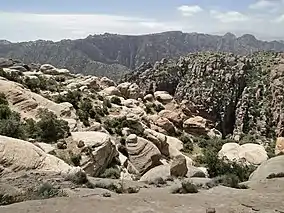 |
Dana Biosphere Reserve | 1998 | 30,800 ha (119 sq mi) |
[12] | |
| Wadi Mujib | 2011 | 21,200 ha (82 sq mi) |
[13] | |||
| Lebanon | 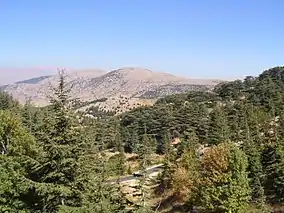 |
Al Shouf Cedar Nature Reserve | 2005 | 29,540 ha (114 sq mi) |
[14] | |
– |
Jabal Al Rihane Biosphere Reserve | 2007 | 18,430 ha (71 sq mi) |
[15] | ||
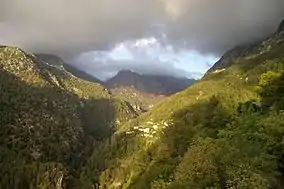 |
Jabal Moussa Biosphere Reserve | 2009 | 6,500 ha (25 sq mi) |
[16] | ||
| Morocco | 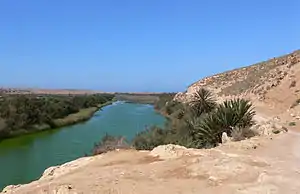 |
Arganeraie | 1998 | 2,568,780 ha (9,918 sq mi) |
[17] | |
 |
Oasis du sud marocain | 2000 | 7,185,371 ha (27,743 sq mi) |
[18] | ||
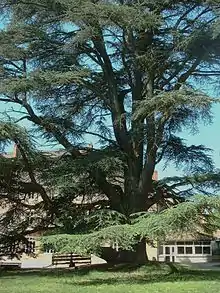 |
Atlas Cedar | 2016 | 1,375,000 ha (5,309 sq mi) |
[19] | ||
| Morocco/Spain | – |
Intercontinental Biosphere Reserve of the Mediterranean | 2006 | 894,134 ha (3,452 sq mi) |
[20] | |
| Qatar | – |
Al Reem Biosphere Reserve | 2007 | 118,888 ha (459 sq mi) |
[21] | |
| Sudan | – |
Dinder National Park | 1979 | 890 ha (3 sq mi) |
[22] | |
– |
Radom National Park | 1979 | 1,250,000 ha (4,826 sq mi) |
[23] | ||
| Jebel Al Dair | 2017 | 637,400 ha (2,461 sq mi) |
[24] | |||
| Syria | 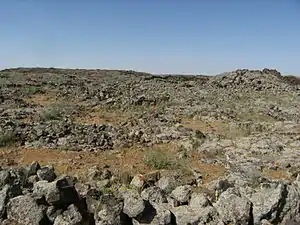 |
Lajat | 2009 | 12,038 ha (46 sq mi) |
[25] | |
| Tunisia |  |
Bou-Hedma National Park | 1977 | 16,988 ha (66 sq mi) |
[26] | |
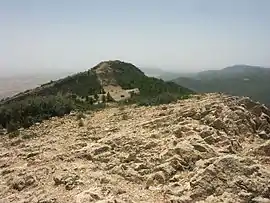 |
Jebel ech Chambi | 1977 | 43,723 ha (169 sq mi) |
[27] | ||
 |
Ichkeul lake | 1977 | 14,100 ha (54 sq mi) |
[28] | ||
 |
Zembra | 1977 | 550 ha (2 sq mi) |
[29] | ||
| United Arab Emirates | – |
Marawah Island | 2007 | 425,500 ha (1,643 sq mi) |
[30] | |
| Yemen | 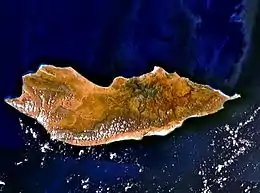 |
Socotra | 2003 | 2,681,640 ha (10,354 sq mi) |
[31] | |
– |
Bura'a | 2011 | 4,280 ha (17 sq mi) |
[32] |
References
- "Arab States". UNESCO. Retrieved 24 May 2016.
- "Tassili N'ajjer". UNESCO. Retrieved 27 March 2018.
- "El Kala". UNESCO. Retrieved 27 March 2018.
- "Djurdjura". UNESCO. Retrieved 27 March 2018.
- "Chrea". UNESCO. Retrieved 27 March 2018.
- "Taza". UNESCO. Retrieved 27 March 2018.
- "Gouraya". UNESCO. Retrieved 27 March 2018.
- "Belezma". UNESCO. Retrieved 27 March 2018.
- "Tlemcen Mountains". UNESCO. Retrieved 27 March 2018.
- "Omayed". UNESCO. Retrieved 27 March 2018.
- "Wadi Allaqi". UNESCO. Retrieved 27 March 2018.
- "Dana". UNESCO. Retrieved 27 March 2018.
- "Mujib". UNESCO. Retrieved 27 March 2018.
- "Shouf". UNESCO. Retrieved 27 March 2018.
- "Jabal Al Rihane". UNESCO. Retrieved 27 March 2018.
- "Jabal Moussa". UNESCO. Retrieved 27 March 2018.
- "Arganeraie". UNESCO. Retrieved 27 March 2018.
- "Oasis du sud marocain". UNESCO. Retrieved 27 March 2018.
- "Atlas Cedar (Cèdre de l'Atlas)". UNESCO. Retrieved 27 March 2018.
- "Intercontinental BR of the Mediterranean". UNESCO. Retrieved 27 March 2018.
- "Al-Reem". UNESCO. Retrieved 27 March 2018.
- "Dinder". UNESCO. Retrieved 27 March 2018.
- "Radom". UNESCO. Retrieved 27 March 2018.
- "Jebel Al Dair biosphere reserve". UNESCO. Retrieved 27 March 2018.
- "Lajat". UNESCO. Retrieved 27 March 2018.
- "Djebel Bou-Hedma". UNESCO. Retrieved 27 March 2018.
- "Djebel Chambi". UNESCO. Retrieved 27 March 2018.
- "Ichkeul". UNESCO. Retrieved 27 March 2018.
- "Iles Zembra et Zembreta". UNESCO. Retrieved 27 March 2018.
- "Marawah". UNESCO. Retrieved 27 March 2018.
- "Socotra Archipelago". UNESCO. Retrieved 27 March 2018.
- "Bura'a". UNESCO. Retrieved 27 March 2018.
This article is issued from Wikipedia. The text is licensed under Creative Commons - Attribution - Sharealike. Additional terms may apply for the media files.